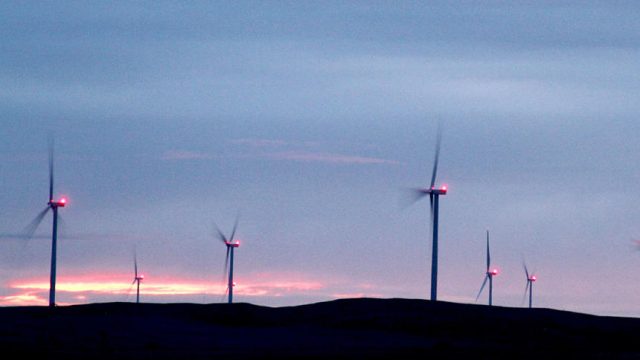Wind Energy Companies Shouldn’t Be Dismissive of Their Inability to Produce Power When It’s Frigid Outside

We’ve had some positively arctic temperatures in our region this year. Back in late January, amid a “polar vortex,” Jason Bohrer of the Lignite Energy Council wrote a guest post for SAB pointing out that it was coal keeping the lights on.
Definitely not wind power.
You would expect the head of a pro-coal group to dunk on wind energy when he can, but his argument isn’t wrong. In fact, a recent report by my colleague April Baumgarten shows that Bohrer was right. When it got really, really cold outside wind energy couldn’t keep up with demand:
Based on feedback from electric companies, MISO predicted turbines would be able to produce 9,000 megawatts on Jan. 30, half of MISO’s total capacity for wind power, Draxten said. But the extreme cold that forced turbines to shut down meant the companies feeding into MISO could only produce 4,000 megawatts, according to a MISO report released in late February.
The wind energy industry is dismissive of this as a problem:
Despite the recent outage, wind energy experts say turbines rarely shut down in North Dakota, so rarely that it doesn’t affect the overall bottom line. It wouldn’t be economically feasible to develop turbines to handle lower temperatures, said Brian Draxten, manager of resource planning for Otter Tail Power Co., a utility based in Fergus Falls, Minn., that draws wind energy in North Dakota.
“The additional costs you have to incur for the very few times probably wouldn’t make it worth it,” he said.
Well, if the bottom line is ok then I guess there’s no problem?
Cold shutting down wind turbines may be a rare occurrence, but it happens when power generation is pretty darn important. Losing electricity when it’s -30 outside isn’t just inconvenient. It’s potentially life threatening.
Wind power generation has been growing by leaps and bounds, both here in North Dakota and elsewhere, but what’s been driving that gold rush is politics not necessarily what’s best for the power grid.
Wind energy proponents will deny this, vehemently, but let’s face it. Wind energy has most favored status in most political circles these days. It’s massively subsidized, and while the wind energy folks will tell you they’re happy to see the gigantic production tax credit they’ve been enjoying disappear, there are reasons to wonder if those subsidies have driven a sort of wind energy bubble.
Did we build wind farms because we needed them? Or because power companies wanted to capture those subsidies?
Meanwhile, we know that when it’s really cold outside, it’s the (disappearing) coal plants that will keep your lights on.




